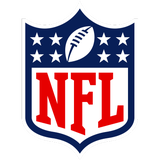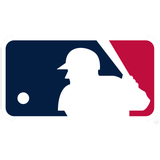
The NHL’s ongoing turf war in the Sunshine State took a somewhat surprising turn this week.
It’s not that the Florida Panthers and Tampa Bay Lightning have shied away from mixing it up before. On the way to combining for four Stanley Cup championships and six Cup Final appearances since 2020, the two teams have met in four playoff series. That has made for a lot of high-stakes hockey.
Advertisement
Still, 186 total penalty minutes in a game is enough to get anybody’s attention. Especially if, as was the case on Thursday at Tampa Bay’s Benchmark International Arena, said game takes place in the preseason.
By night’s end, a total of 49 penalties had been called in a 5-2 Lightning victory, including 32 minutes of penalties for fighting, eight misconducts and four unsportsmanlike penalties. In one particularly nasty first-period sequence, Tampa forward Brandon Hagel was cross-checked in the back and then punched by the Panthers’ A.J. Greer during a break in play, sparking a series of brawls and scrums and later earning Greer the maximum league-issued fine for roughing.
AJ Greer has been fined $2,213.54, the maximum allowable under the CBA, for roughing Brandon Hagel pic.twitter.com/BLq5iLNLoe
— B/R Open Ice (@BR_OpenIce) October 3, 2025
A Lady Byng Award showcase of gentlemanly play this was not. And yet, after the game, both sides sounded as though they enjoyed what likely struck most others as madness for a meaningless exhibition.
“What can we say? A couple of teams that play each other a ton, that know each other better than anyone,” Lightning coach Jon Cooper told reporters postgame. “I look at it as guys sticking up for each other and doing what they feel they have to.”
Panthers coach Paul Maurice described the incidents as “just some old friends getting reacquainted.” Florida forward Evan Rodrigues similarly acknowledged that hatred between the teams “was evident out there” and that “it was good for our team to get us in the mix.”
Added Rodrigues about the Lightning, “They weren’t too happy. They came out and played a playoff-style game, it seemed like.”
The 2025-26 Stanley Cup playoffs start next April, for those wondering.
Rough and rowdy preseason games are nothing new for the NHL; fringe prospects and aging veterans alike have long used the time to assert themselves in attempts to impress a coach or general manager. On-ice brawls were particularly abundant from the 1970s through the early 2000s, when teams regularly scheduled 10 games in training camps that lasted nearly a month. And even though both preseason and regular-season fighting has steadily diminished since the league mandated visors in 2013-14 — removing a helmet for a bout is illegal, and besides, who wants to punch somebody’s face that is partially protected — this year 72 players had still dropped the gloves for a total of 83 fights through Thursday.
Advertisement
Then as now, traveling teams iced a lineup comprised mostly of players who are ticketed for the minors. The reason teams’ stars tend only to play in a couple of games near the end of preseason is, in part, to avoid unnecessary risks. Appearing in a game opposite players looking to make a name for themselves qualifies.
Two days before a UFC-like event broke out among Panthers and Lightning players, another ugly scene unfolded between the Ottawa Senators and Montreal Canadiens at a neutral-site game in Quebec City. Given the famously violent history from when the former Quebec Nordiques used to host the Canadiens, the 150 penalty minutes logged in Montreal’s 5-0 victory might have seemed like a stroll down memory lane for local fans.
The Canadiens’ Xhekaj brothers, Arber and Florian, were ejected in the third period after two fights apiece, including one while on the same shift. They hit the showers having amassed a combined 31 penalty minutes. Last regular season, according to Stathead, only 20 NHL teams registered 31 penalty minutes in an entire game.
“There’s not a lot of guys on both sides that like each other, so stuff’s going to happen out there,” Montreal center Kirby Dach told reporters. “It’s a grown man’s game.”
Florian Xhekaj vs Jan Jenik from the Montreal Canadiens at Ottawa Senators game on Sep 30, 2025 https://t.co/z412ZLuBZR
— HockeyFights.com (@hockeyfights) October 1, 2025
All told, the 2025-26 preseason has been slightly chippier than its predecessor: Ten players had registered two or more fights through Thursday, led by Florian Xhekaj’s three, compared to seven in 2024-25. It’s a lot of risk for games that don’t count toward the standings, which perhaps explains why the Senators recalled eight players from their minor-league affiliate and signed two more to professional tryout agreements prior to Wednesday’s game against the St. Louis Blues — a relatively tame 7-1 loss with only four penalties, all minors.
Advertisement
But the days of the circus coming to town every preseason might also be coming to an end. Starting next season, in accordance with the new collective bargaining agreement that was recently ratified by the league and players’ union, teams can only play up to four exhibition games — about two to three fewer than teams have annually played for the past decade or so.
“I don’t think you’ll get too many veterans upset about losing those preseason games, but if I’m a younger player I don’t like it,” a Western Conference defenseman told The Athletic in July. “When you’re not established, those preseason games can make all the difference. You get those reps to show coaches what you bring. I know those games helped me when I was younger.”
Veteran players tend to know exactly exactly what their bodies require to be ready for the regular season. For example, Pittsburgh Penguins captain Sidney Crosby has always preferred tuning up in later preseason games because the speed more closely approximates that of the regular season — as opposed to earlier games that feature fewer roster regulars. Usually, teams use their preseason finales to dress-rehearse their opening-night lineups; though physical, these games contain fewer cheap shots and fights.
The one thing no veteran wants to risk in a preseason game is getting hurt. It’s why most play only in home preseason games, when opponents bring so-called B squads. But that’s with teams playing six or seven games in the preseason. How coaches and players approach a four-game preseason slate is unknown.
Still, it’s fair to presume that junior-eligible prospects, and players definitively ticketed to play in the AHL, will get fewer opportunities in preseason games than they do now — and that veterans on two-way deals or PTOs will be going heavier and harder a lot sooner.
For both groups, on-ice shifts are a form of currency. And supply won’t meet demand with only four preseason games.
Then again, after ugly weeks like this, maybe the players were onto something when negotiating the number down to a new maximum.
(Photo: Nathan Ray Seebeck-Imagn Images)
This news was originally published on this post .






Be the first to leave a comment